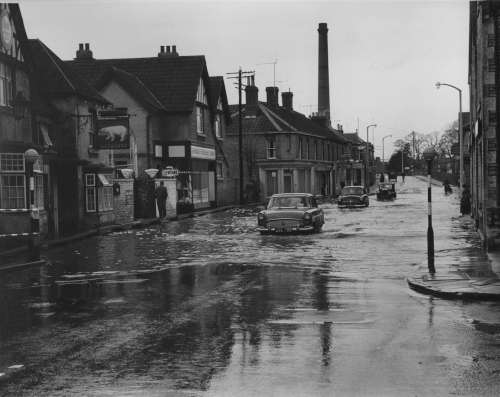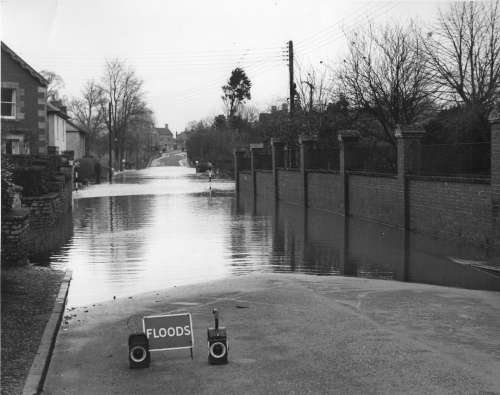Melksham High Street and History
Volunteer Anna has taken an indepth look at one of her local towns, Melksham. She has discovered photographs of the area in our archive.
Melksham, a small parish town, has a rich history of trade, originating from the Anglo-Saxon and Medieval times. Anglo-Saxon evidence around certain Churches suggest that the name ‘Melksham’ originates from the Old English ‘meoloc’, translating to ‘milk’. This reflects its early history in pastoral and diary farming, being prominent until around the 16th Century, when the cloth trade began to take over, perhaps due to the building of Place House, a manor house, during the mid-16th Century. However, this was only for a short period of time, as this trade had shifted more towards the North. As a result of low employment, riots broke out, including one at The Bear Inn (located on the High Street) where the government were forced to intervene. Unfortunately for the workers, this did not change the declining industry, finally ending in 1871.
Replacing the cloth and dairy industries was the development of the Avon (India) Rubber Company. Moving from Limpley Stoke, they expanded their business of decades, including taking over the derelict cloth mills, eventually to play a considerable role in the development of Melksham’s economy. However, it wasn’t just limited to this industry - the Double Gloucester cheese production gained a notable reputation, bringing back the historic dairy industry, alongside the Wilts and Berks Canal and the Wilts, Somerset and Weymouth Railway during the early and mid 19th Century. Particularly reliant on the older diary industry was the Wilts United Dairy Company, established by Charles Maggs, producing butter and being a milk depot.
These businesses continued through to the early 20th Century, where dairy farming continued to expand parallel to other businesses. Because of this, a surge in population numbers increased, giving a high demand for new housing now seen throughout the town. Employment reached a new high for the population, but due to moving into tertiary and quaternary sectors of the economy, the businesses that once ran the town fell into decline. Today, they have been replaced by smaller businesses, but the population numbers continue to rise, with new housing developments constantly being worked on.
One particular point in Melksham’s history, as shown on the photographs, is the flood of 1960. During the 1890s, there was a significant decline in the wool trade, becoming a site of industrial development. This urbanisation contributed greatly to the 1960 flood, where the River Avon’s course, after a period of extremely heavy rain, was altered by the council. This was to allow for a new flood elevation scheme, but quickly resulted in serious problems. The River Avon was diverted nearer to the fields, which gave way for further urbanisation and industrial expansion, particularly for the rubber works. Due to its location, flood plains are constantly kept free from development near the river, with local farms getting high subsidies for the crops lost each year as flooding continues to pose a threat.






